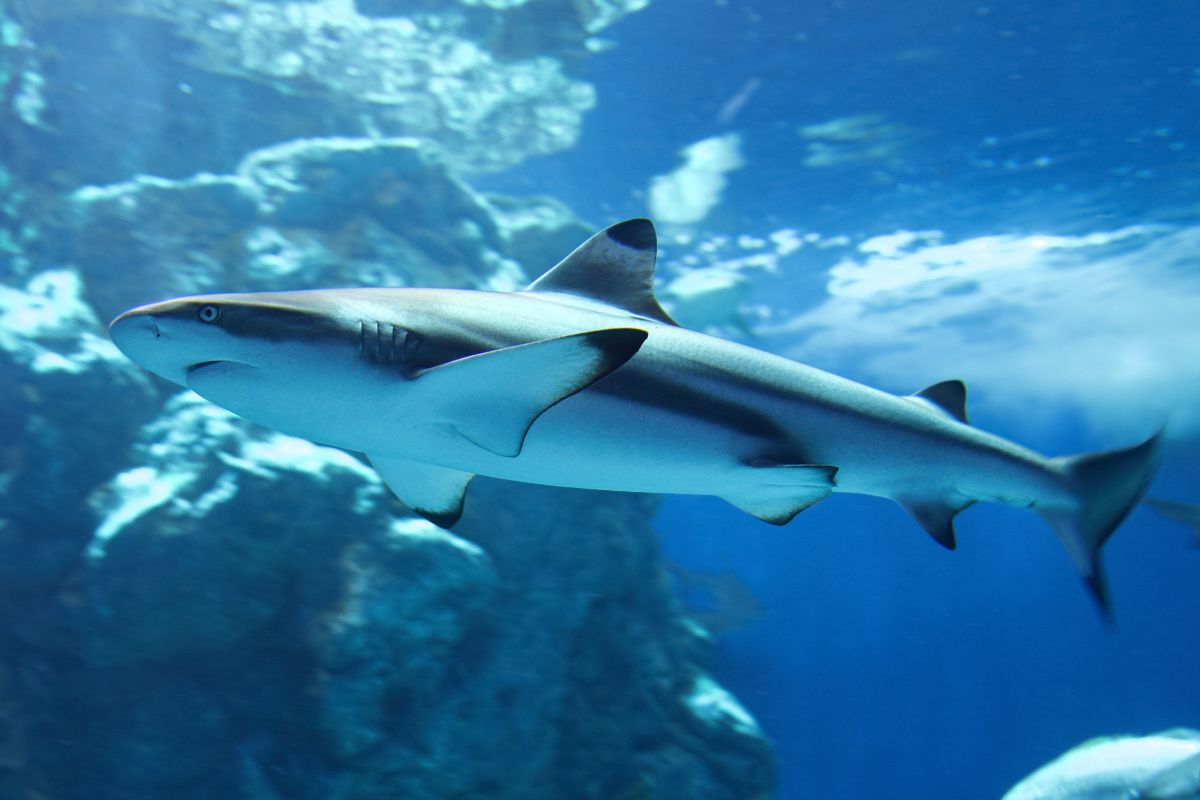When it comes to sharks, there are a number of common misconceptions which are often cited as fact; many people believe that sharks are evil, cold-blooded killers who prey on humans, while others consider them to be nothing more than large fish.

The sharks-as-mammals discussion is one that has prevailed for a number of years; but is there really any truth behind it, and can we consider sharks to be mammals? We took a closer look at the facts.
What Are Sharks?
Sharks are a group of cartilaginous fishes (fish) that inhabit all oceans throughout the world, and there are over 400 species of sharks in existence today, with about 30% of those being found in tropical waters.
Common examples of the best-known sharks include the great white shark, tiger shark, hammerhead shark, nurse hound shark, bull shark, lemon shark, blacktip shark, sandbar shark, smooth dogfish, porbeagle shark, mako shark, thresher shark, basking shark, whale shark, and even the angel shark! Each of these sharks has its own unique physicality and elements, but they all have one thing in common: scientifically, they are considered and classified as fish.
Shark Anatomy & Physiology
Shark anatomy varies from species to species, with a wide range of sizes, shapes, colors and muscle tone, but all creatures of this type do share some basic similarities.
All sharks have an external skeleton made up of bony plates called dermal denticles, which are used for protection and defense – this replaces the more traditional scales of some fish.
They also possess gills located along their sides, which help them breathe air.
In addition to these two features, sharks have a dorsal fin, pectoral fins, tail, and caudal peduncle.
The dorsal fin is placed near the back of the body, while the pectoral fins are located on either side of the head.
The tail is long and pointed, while the caudal peduncle is a narrow extension of the spine that connects the tail to the body.
Shark Behavior
Like other animals, sharks exhibit certain behaviors when faced with danger or when they feel threatened. These behaviors include:
- Raising Fins
A shark may raise its dorsal fin into the air, creating a “shoulder hump”. This helps the shark appear larger, and makes it easier to detect approaching threats.
- Moving Away
In some cases, if a shark feels threatened, it will swim away from the perceived threat by swimming toward deeper water.
- Biting
If a shark senses danger nearby, it may use its teeth to bite something solid, such as another animal, rock, or tree.
- Sensing Food
When sharks sense food, they may open their mouths wide, revealing rows of sharp teeth. In this way, they can better see what they are eating.
Once a shark has caught its prey, it may swallow the entire thing whole, or tear off pieces of meat and eat them.
- Swimming Fast
Sharks may swim fast to escape predators, or slow down to hunt prey.
Are Sharks Mammals?
There is a common misconception that sharks are mammals, and this is usually derived from the fact that they give birth to live young, producing eggs which remain inside the body until the point of birth.
This classification as mammals is inaccurate, however, as sharks are actually classified as fish. Here again, however, the discussion is far from simple.
There are also some physical characteristics that make sharks different from fish.
For instance, sharks have no scales in the traditional sense – their skin is covered with tiny bumps called dermal denticles.
Their eyes are positioned at the top of their heads, rather than below them, most fish do not tend to have the same internal skeletal structure that allows them to move around as freely and attack prey, and most sharks have five pairs of gill slits, whereas fish only have three.
Despite these differences, however, sharks are still classed as fish by scientists and experts, and this is because they belong to the same phylum (or group) of animals known as Chordata.
The Phylogeny of Sharks

Chordates are one of the oldest groups of living creatures, dating back over 500 million years.
There are many types of chordate, including sea squirts, tunicates, jellyfish, starfish, sea cucumbers, sea urchins, and even humans!
Most people know about four main groups of chordates: vertebrates, arthropods, mollusks, and cephalochordates. But there are actually seven major divisions within the chordate phylum, which includes all of the above-mentioned groups.
These seven divisions are:
- Craniates
- Gnathostomulids
- Echinoderms
- Hemichordates
- Pterobranchs
- Tunicates
- Vertebrates
Within each division, there are several subgroups.
What Are Some of The Key Features of Sharks?
Sharks have a number of key features and distinguishing elements, and these include:
- Cold Blooded
The first key feature of sharks is that they are cold-blooded. That means they don’t need to produce their own body heat but instead rely on external sources for warmth.
They also lack sweat glands in order to cool themselves down.
- Teeth
Shark teeth are very specialized and can vary greatly depending on the species.
Most sharks have sharp, needle-like teeth, which can be used for catching food, defense, or both.
However, some shark species, such as the saw shark, have flat, broad teeth that are more suited to crushing hard objects.
- Scales
Sharks are covered in scales, and these present as small bumps known as dermal denticles.
These help to keep the shark warm and protect its skin from damage, as well as helping to camouflage the shark against its background.
- Skeleton
Finally, sharks have an internal skeleton made up of cartilage. This helps to support their bodies and gives them strength.
Final Thoughts
In conclusion, despite the common misconception, sharks actually take their place in the animal kingdom as fish, rather than mammals.
There are a number of derivations and distinctions that help sharks to stand out from other fish, and this makes them unique among the world’s marine life.
- Is It Possible For A Shark To Swim Backwards? - August 2, 2022
- Are Leopard Sharks Dangerous? - August 2, 2022
- What Are The Differences Between Shark And Dolphin Fins? - August 1, 2022








